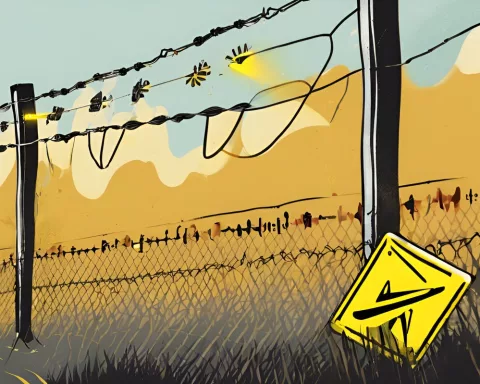Hope Sonic is a manufacturing plant in South Africa that creates toys from recycled plastic, primarily obtained from waste pickers. The plant is committed to sustainability, using solar power for 20-24% of its daily energy demands and aiming to transition to renewable energy completely. The predominantly female workforce embodies the company’s values of empowerment and growth. Hope Sonic serves as a model for green manufacturing and environmentally friendly businesses.
Reviving Recycling: Hope Sonic’s sustainable approach to toy manufacturing is centered around repurposing discarded plastic and committing to eco-conscious production. With a predominantly female workforce and a dedication to renewable energy, Hope Sonic serves as a model for green manufacturing and sustainability in the industry.
Section 1: Repurposing Discarded Plastic
In the commercial center of Blackheath, an orchestra of machines brings discarded milk bottles back to life, reimagining them into toys like the scaled-down versions of Shoprite’s Kasi Kruza and Checkers’ Sixty60 bikes. The manufacturing plant, Hope Sonic, stands as an active symbol of the transformative potential of recycling and sustainability.
Section 2: The Birth of Hope Sonic
Hope Sonic came into existence in 2013, the result of Nilam Naran’s vision, who got intrigued by the vuvuzela production process during a business trip to China in the early 2010s. The vibrance of the vuvuzela manufacturing process served as a revelation for Naran, sparking an urge to establish a significant and sustainable business.
The manufacturing plant started its operations with second-tier machinery, embarking on its journey with the production of basic black scooters and rideable bikes. Presently, Hope Sonic prides in offering an array of eight different versions, the latest additions being replicas of the Checkers Sixty60 bikes and the Shoprite Kasi Kruza. Their extensive catalogue of toys includes everything from ride-on bikes, tea sets, kitchen sets, to diggers and dump trucks and exclusively caters to Shoprite and Checkers supermarkets.
Section 3: Commitment to Sustainability
Fundamental to Hope Sonic’s modus operandi is the dedication to cost-effective and eco-conscious production. Naran emphasized that black material recycled is consistently less expensive than new material, making it economically viable and environmentally friendly to prioritize recycling. Naran’s ultimate aim is to manufacture all toys using 100% recycled material, primarily obtained from milk bottles collected by waste pickers.
The plant’s pledge to sustainability surpasses the utilization of recycled materials. By capitalizing on solar power, the manufacturing plant’s rooftop solar photovoltaic (PV) system currently caters to between 20% and 24% of its daily energy demands. Naran’s primary objective is to wholly transition to renewable energy. The idea of producing a scooter manufactured from 100% recycled material and powered by renewable energy encapsulates Naran’s bold vision for Hope Sonic’s future.
Section 4: A Workplace of Empowerment
Another notable feature of Hope Sonic is its predominantly female workforce. Women form 80% of the factory personnel. Lauren Solomon, a supervisor with more than ten years of experience, started as a drill operator for scooter handles and bodies before advancing to supervise machine operations. Solomon embodies Hope Sonic’s values – continuous learning, growth, and empowerment.
During his visit to the plant, Cape Town’s Mayor, Geordin Hill-Lewis, applauded Hope Sonic for being a thriving business providing employment opportunities to locals. The factory serves as a symbol of sustainability and female empowerment and aligns with Cape Town’s objective to nurture environmentally friendly businesses.
Section 5: A Model for Green Manufacturing
Hope Sonic’s approach to business proves the potential of recycling and renewable energy in the manufacturing sector. By refashioning discarded milk bottles into cherished toys, the factory offers a practical, tangible example of how industries can transition to greener practices. This contributes to a sustainable future while simultaneously cultivating an environment that encourages empowerment and growth.
1. What is Hope Sonic and what do they manufacture?
Hope Sonic is a manufacturing plant based in South Africa that creates toys from recycled plastic, primarily obtained from waste pickers. They manufacture an array of toys, including ride-on bikes, kitchen sets, diggers, and dump trucks, catering exclusively to Shoprite and Checkers supermarkets.
2. How did Hope Sonic come into existence?
Hope Sonic was founded in 2013 by Nilam Naran, who was intrigued by the vuvuzela production process during a business trip to China in the early 2010s. The manufacturing plant started its operations with second-tier machinery, producing basic black scooters and rideable bikes.
3. What is Hope Sonic’s commitment to sustainability?
Hope Sonic’s commitment to sustainability revolves around repurposing discarded plastic and committing to eco-conscious production. They aim to manufacture all toys using 100% recycled material, primarily obtained from milk bottles collected by waste pickers. The manufacturing plant also uses solar power for 20-24% of its daily energy demands and aims to transition to renewable energy completely.
4. What is the workforce like at Hope Sonic?
Hope Sonic’s predominantly female workforce embodies the company’s values of empowerment and growth. Women form 80% of the factory personnel, and employees like Lauren Solomon, a supervisor with more than ten years of experience, started as a drill operator for scooter handles and bodies before advancing to supervise machine operations.
5. What is the significance of Hope Sonic in the industry?
Hope Sonic serves as a model for green manufacturing and environmentally friendly businesses, offering a practical, tangible example of how industries can transition to greener practices. The factory contributes to a sustainable future while simultaneously cultivating an environment that encourages empowerment and growth.
6. Which supermarkets do Hope Sonic’s toys cater to?
Hope Sonic’s toys exclusively cater to Shoprite and Checkers supermarkets.












